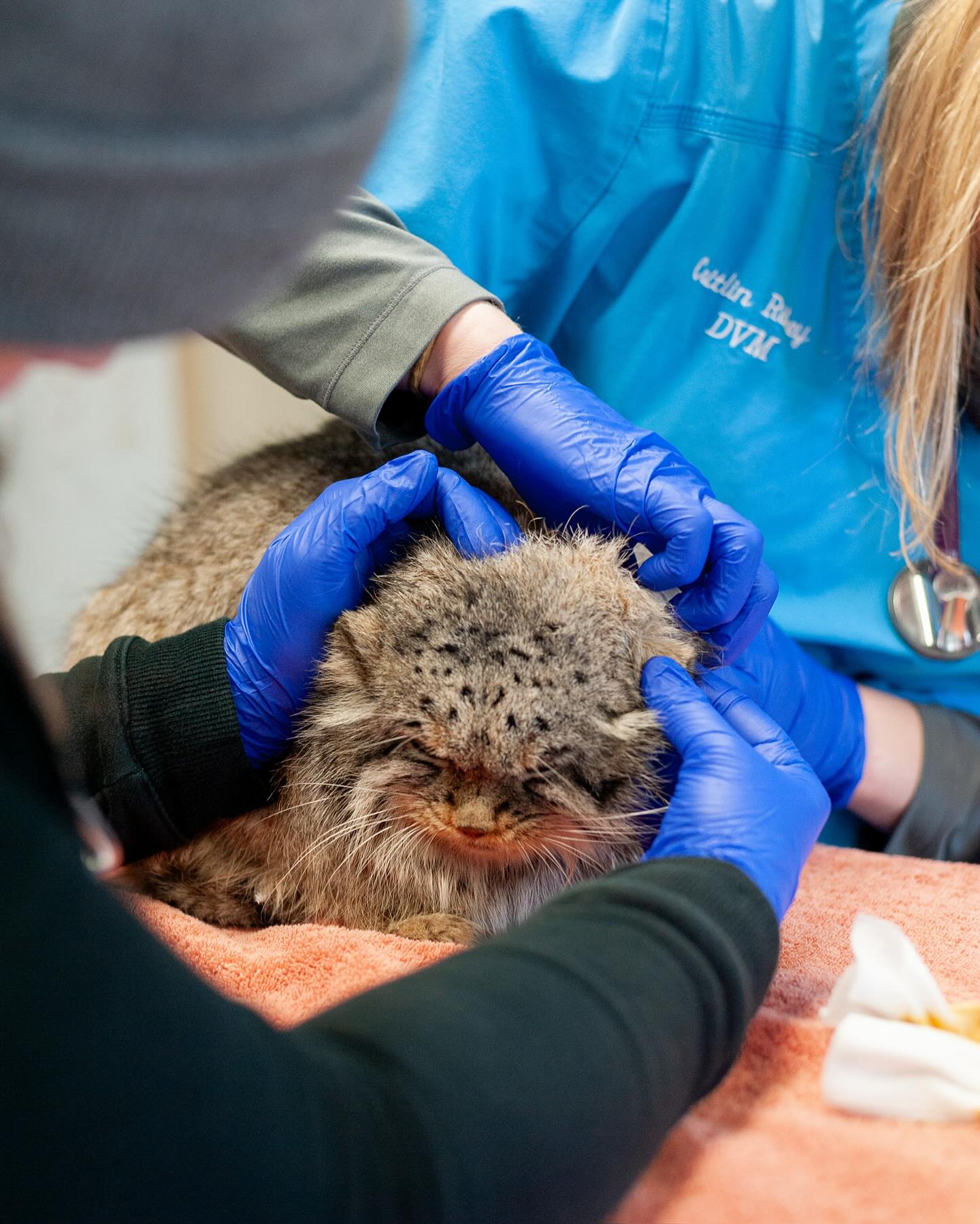- Meet Kai, the Pallas’s Cat with vision loss, and learn how specialized care contributes to his well-being.
- Insights into the challenges of managing vision impairments in wildlife and the adaptive strategies employed.
- The role of dedicated veterinary and keeper care in maintaining Kai’s quality of life.
- Exploration of Pallas’s Cats’ behavior, habitat, and conservation status.
- The impact of conservation efforts and the importance of educational initiatives in wildlife protection.
Meet Kai, a Pallas’s Cat residing in our zoo, has recently faced a significant challenge – vision loss. Pallas’s Cats, also known as Otocolobus manul, inhabit the mountainous regions of Central Asia and are recognized for their dense fur and expressive faces. Understanding Kai’s journey offers insights into veterinary challenges, behavioral adaptations, and broader conservation implications.
Pallas’s Cats are not well-known, but they occupy a fascinating niche within the ecosystem. Their natural habitat includes rocky steppes and cold deserts, primarily in Mongolia and China. These cats have evolved to thrive in harsh climates, using their thick coats to withstand the cold. Their diet mainly comprises small mammals and birds, requiring keen eyesight for hunting.
The loss of vision in a predator can severely impact its ability to hunt and navigate its environment. For Kai, adapting to vision changes has been a critical focus of his care team. Despite this setback, he demonstrates resilience. His environment has been modified to assist with his navigation, featuring increased tactile stimulation and familiar scents to guide him. This approach emphasizes the adaptability of wildlife and the importance of tailored care strategies in captivity.
Vision impairments in wildlife present unique challenges. Unlike domesticated animals, wild species often rely heavily on their senses for survival. For Kai, the gradual reduction in vision likely posed initial disorientation. His care strategy incorporates regular health assessments and enrichment activities to promote mental and physical health. Fostering an environment that simulates natural behaviors is essential to maintaining his quality of life.
Veterinary care plays a pivotal role in managing Kai’s condition. An interdisciplinary team collaborates to monitor his health, focusing on preventing further complications. Routine check-ups include ocular examinations and nutritional assessments. Ensuring his diet meets the necessary caloric and nutritional requirements is fundamental, considering his decreased mobility.
Beyond health management, the keeper’s role involves daily interactions that build trust and reduce stress. Their awareness of Kai’s behavioral cues allows for timely adaptations to his care routine. This emotional bond underscores the human-animal connection and its significance in animal husbandry.
Pallas’s Cats are considered Near Threatened by the IUCN Red List. Habitat degradation and declining prey populations pose significant threats. Conservation programs aim to mitigate these challenges through habitat protection and breeding initiatives. Educating the public about species like the Pallas’s Cat is crucial. Awareness can drive support for conservation efforts and emphasize the importance of biodiversity.
Highlighting Kai’s journey serves as an educational tool, engaging visitors and fostering a deeper understanding of wildlife needs. Through storytelling, the zoo aspires to inspire future conservationists. Visitors can observe Kai and learn about his species’ ecological role, the threats they face, and the conservation actions underway.
Education also extends to zoo staff. Continuous training in animal behavior and welfare science enhances the care provided to animals with special needs. Staying updated with current research ensures that Kai receives the most advanced and compassionate care.
The dedication to Kai reflects broader conservation values. Every effort made within the zoo translates to greater conservation impacts globally. Supporting breeding programs and research initiatives contributes to wild population stability and ecosystem health.
Research conducted on animals like Kai can assist in the conservation of natural habitats. By studying health challenges and adaptations, scientists gain insights into the ecological pressures faced by species in the wild. This information can guide effective conservation strategies and policy-making.
In conclusion, Kai’s story illustrates the intricate relationship between animal care, conservation, and public education. While his vision loss presents challenges, it has spotlighted the resilience and adaptability of Pallas’s Cats. Through dedicated and informed care, Kai continues to thrive, becoming a symbol of hope for his species. As we learn from him, we are reminded of our responsibility to protect and preserve the natural world.
*****
Source Description
Meet Kai, one of our Pallas’s Cats. He recently experienced vision loss, but thanks to dedicated round the clock care from our team, he’s still thriving. Stay tuned for a special update from his vet and primary keeper next week. 🐾


